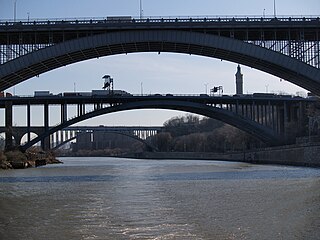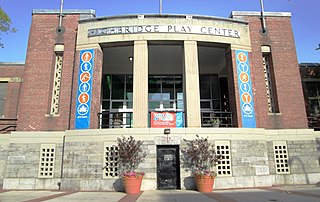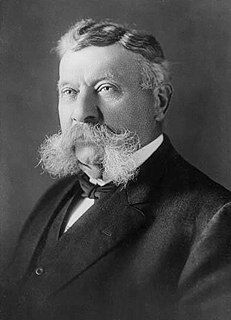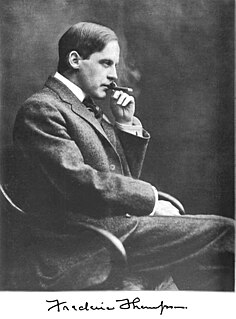
An amusement park is a park that features various attractions, such as rides and games, as well as other events for entertainment purposes. A theme park is a type of amusement park that bases its structures and attractions around a central theme, often featuring multiple areas with different themes. Unlike temporary and mobile funfairs and carnivals, amusement parks are stationary and built for long-lasting operation. They are more elaborate than city parks and playgrounds, usually providing attractions that cater to a variety of age groups. While amusement parks often contain themed areas, theme parks place a heavier focus with more intricately-designed themes that revolve around a particular subject or group of subjects.

Coney Island is a peninsular neighborhood and entertainment area in the southwestern section of the New York City borough of Brooklyn. The neighborhood is bounded by Brighton Beach and Manhattan Beach to its east, Lower New York Bay to the south and west, and Gravesend to the north and includes the subsection of Sea Gate on its west. More broadly, Coney Island or sometimes for clarity the Coney Island peninsula consists of Coney Island proper, Brighton Beach, and Manhattan Beach. This was formerly the westernmost of the Outer Barrier islands on the southern shore of Long Island, but in the early 20th century it became a peninsula, connected to the rest of Long Island by land fill.

The Harlem River is an 8-mile (13 km) tidal strait in New York, United States, flowing between the Hudson River and the East River and separating the island of Manhattan from the Bronx on the New York mainland.

Topsy was a female Asian elephant who was electrocuted at Coney Island, New York, in January 1903. Born in Southeast Asia around 1875, Topsy was secretly brought into the United States soon thereafter and added to the herd of performing elephants at the Forepaugh Circus, who fraudulently advertised her as the first elephant born in America. During her 25 years at Forepaugh, Topsy gained a reputation as a "bad" elephant and, after killing a spectator in 1902, was sold to Coney Island's Sea Lion Park. Sea Lion was leased out at the end of the 1902 season and during the construction the park that took its place, Luna Park, Topsy was used in publicity stunts and also involved in several well-publicized incidents, attributed to the actions of either her drunken handler or the park's new publicity-hungry owners, Frederic Thompson and Elmer "Skip" Dundy.

In the United States, trolley parks, which started in the 19th century, were picnic and recreation areas along or at the ends of streetcar lines in most of the larger cities. These were precursors to amusement parks. Trolley parks were often created by the streetcar companies to give people a reason to use their services on weekends.

Luna Park was an amusement park in Coney Island, Brooklyn, New York City. Luna Park was located on a site bounded by Surf Avenue to the south, West 8th Street to the east, Neptune Avenue to the north, and West 12th Street to the west. Luna Park opened in 1903 and operated until 1944.

Steeplechase Park was a 15-acre (6.1 ha) amusement park in Coney Island, Brooklyn, New York City. Steeplechase Park was created by entrepreneur George C. Tilyou in 1897 and operated until 1964. It was the first of the three large amusement parks built on Coney Island, the other two being Luna Park (1903) and Dreamland (1904). Of the three, Steeplechase was the longest-lasting, running for 67 years.

Palisades Amusement Park was a 38-acre amusement park located in Bergen County, New Jersey, across the Hudson River from New York City. It was located atop the New Jersey Palisades lying partly in Cliffside Park and partly in Fort Lee. The park operated from 1898 until 1971, remaining one of the most visited amusement parks in the country until its closure in 1971, after which a high-rise luxury apartment complex was built on its site.

South Beach is a neighborhood on the East Shore of Staten Island, New York City, situated directly south of the Verrazzano-Narrows Bridge. South Beach is bounded by New York Bay on the southeast, Seaview Avenue on the southwest, Laconia Avenue on the northwest, Reid and McClean Avenues on the north, and Lily Pond Avenue on the northeast. It is adjacent to Midland Beach to the southwest, Dongan Hills and Old Town/Concord to the northwest, and Fort Wadsworth and Rosebank to the northeast.

Highbridge Park is a public park on the western bank of the Harlem River in Washington Heights, Manhattan, New York City. It stretches between 155th Street and Dyckman Street in Upper Manhattan. The park is operated by the New York City Department of Parks and Recreation. The City maintains the southern half of the park, while the northern half is maintained by the non-profit New York Restoration Project. Prominent in the park are the Manhattan end of the High Bridge, the High Bridge Water Tower, and the Highbridge Play Center.

Fort George was the name of five forts in what is now the state of New York.

Charles I. D. Looff was a German master carver and builder of hand-carved carousels and amusement rides, who immigrated to the United States of America in 1870. Looff built the first carousel at Coney Island in 1876. During his lifetime, he built over 40 carousels, several amusements parks, numerous roller coasters and Ferris wheels, and built California's famous Santa Monica Pier. He became famous for creating the unique Coney Island style of carousel carving.

Starlight Park is a public park located along the Bronx River in the Bronx in New York City. Starlight Park stands on the site of an amusement park of the same name that operated in the first half of the 20th century.
White City is the common name of dozens of amusement parks in the United States, the United Kingdom, and Australia. Inspired by the White City and Midway Plaisance sections of the World's Columbian Exhibition of 1893, the parks started gaining in popularity in the last few years of the 19th century. After the 1901 Pan-American Exposition inspired the first Luna Park in Coney Island, a frenzy in building amusement parks ensued in the first two decades of the 20th century.

The South Beach–Franklin Delano Roosevelt Boardwalk, alternately referred to as the FDR Boardwalk or the South Beach Boardwalk, is a boardwalk facing the Lower New York Bay on the East Shore of Staten Island, one of the five boroughs of New York City. The boardwalk is the main feature of a public park that stretches from Fort Wadsworth and the Verrazzano-Narrows Bridge to Miller Field, both part of the Gateway National Recreation Area. The park also contains numerous recreational facilities, including a skate park.

An animal theme park, also known as a zoological theme park, is a combination of an amusement park and a zoo, mainly for entertainment, amusement, and commercial purposes. Many animal theme parks combine classic theme park elements, such as themed entertainment and amusement rides, with classic zoo elements such as live animals confined within enclosures for display. Many times, live animals are utilized and featured as part of amusement rides and attractions found at animal theme parks.
Riverview Park was an amusement park in Des Moines, Iowa, from 1915 to 1978. What began in pre-1915 as a zoological garden and trolley destination in an area of Des Moines known as Highland Park would become Riverview Amusement Park, a popular family entertainment oasis in early Iowa history. It was built upon an island, accessed via a wooden bridge, by a group of nine local businessmen that were headed up by a Des Moines movie-theater mogul named Abe Frankle. In the early years various entertaining events and attractions that made Riverview Park a fondly remembered family get-away included free acts featuring death-defying daredevils and musical band concerts. The early amusement rides included in 1923 a new carousel (PTC#65) from the Philadelphia Toboggan Company, whose carousels represented some of the finest examples of hand carved carousel horses in America, and a large Carousel Pavilion building to house it. In 1928 a Herschell-Spillman menagerie carousel with intricate hand-carved animals replaced the PTC carousel. In 1920 John Miller–designed a figure-eight roller coaster featuring eight full dips that all went to the ground level for the park. In 1940, the Riviera Ballroom was added and provided big band dances throughout the 1940s and 1950s and teen dances in the 1960s and 1970s. The Riviera Ballroom was inducted into the Iowa Rock and Roll Hall of Fame in 2010.

Calvert Vaux Park is an 85.53-acre (34.61 ha) public park in Gravesend, Brooklyn, in New York City. Created in 1934, it is composed of several disconnected sections along the Belt Parkway between Bay 44th and Bay 49th Streets. The peninsula upon which the park is located faces southwest into Gravesend Bay, immediately north of the Coney Island Creek. The park was expanded in the 1960s by waste from the construction of the Verrazzano-Narrows Bridge, and was renamed after architect Calvert Vaux in 1998. It is operated by the New York City Department of Parks and Recreation, also known as NYC Parks.

Frederic Williams Thompson was an American architect, engineer, inventor, and showman known for creating amusement rides and one of the first large amusement parks.

Elmer Scipio "Skip" Dundy Jr. was an American showman and promoter known for creating amusement rides and one of the first large amusement parks.



















